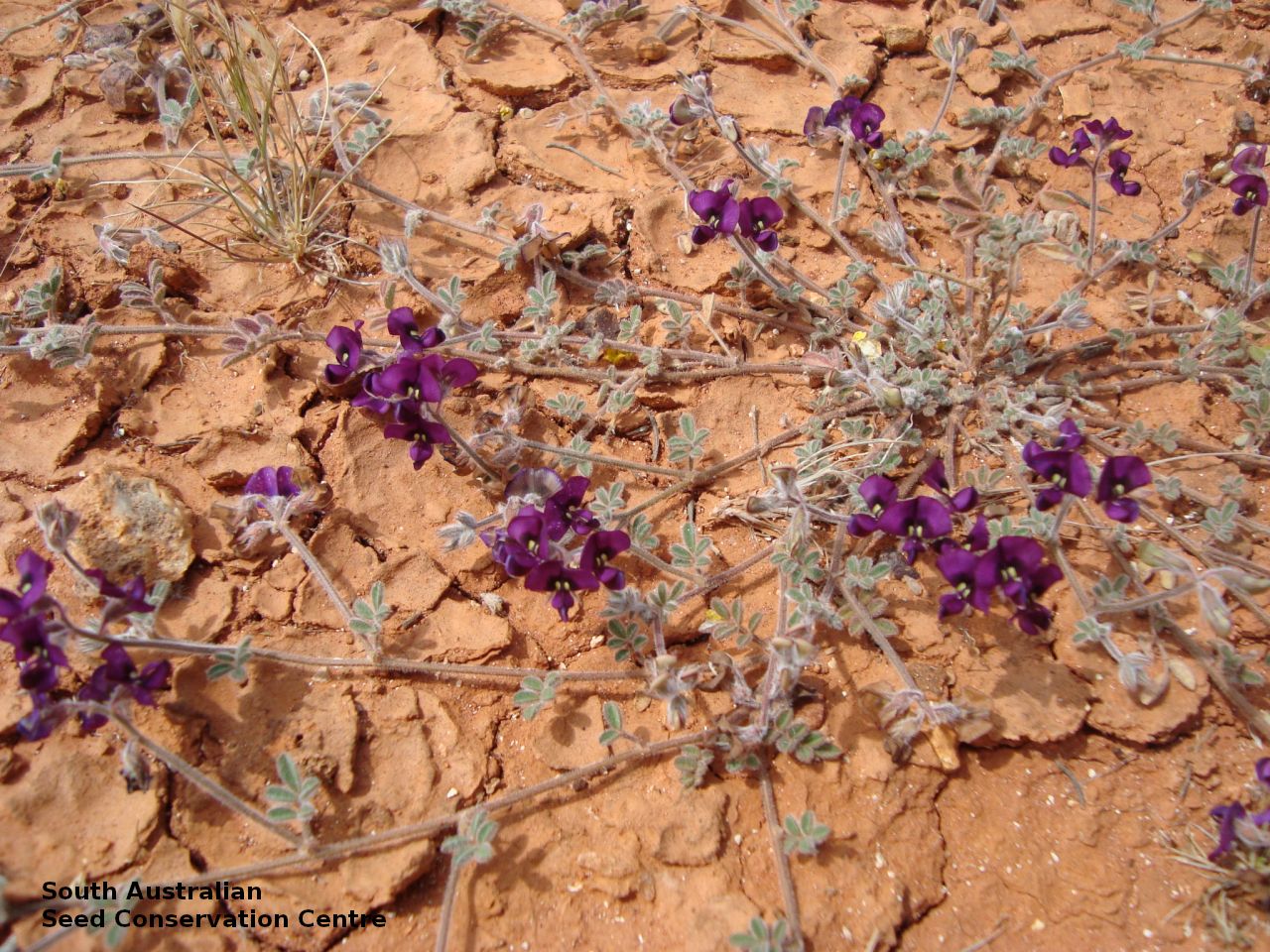
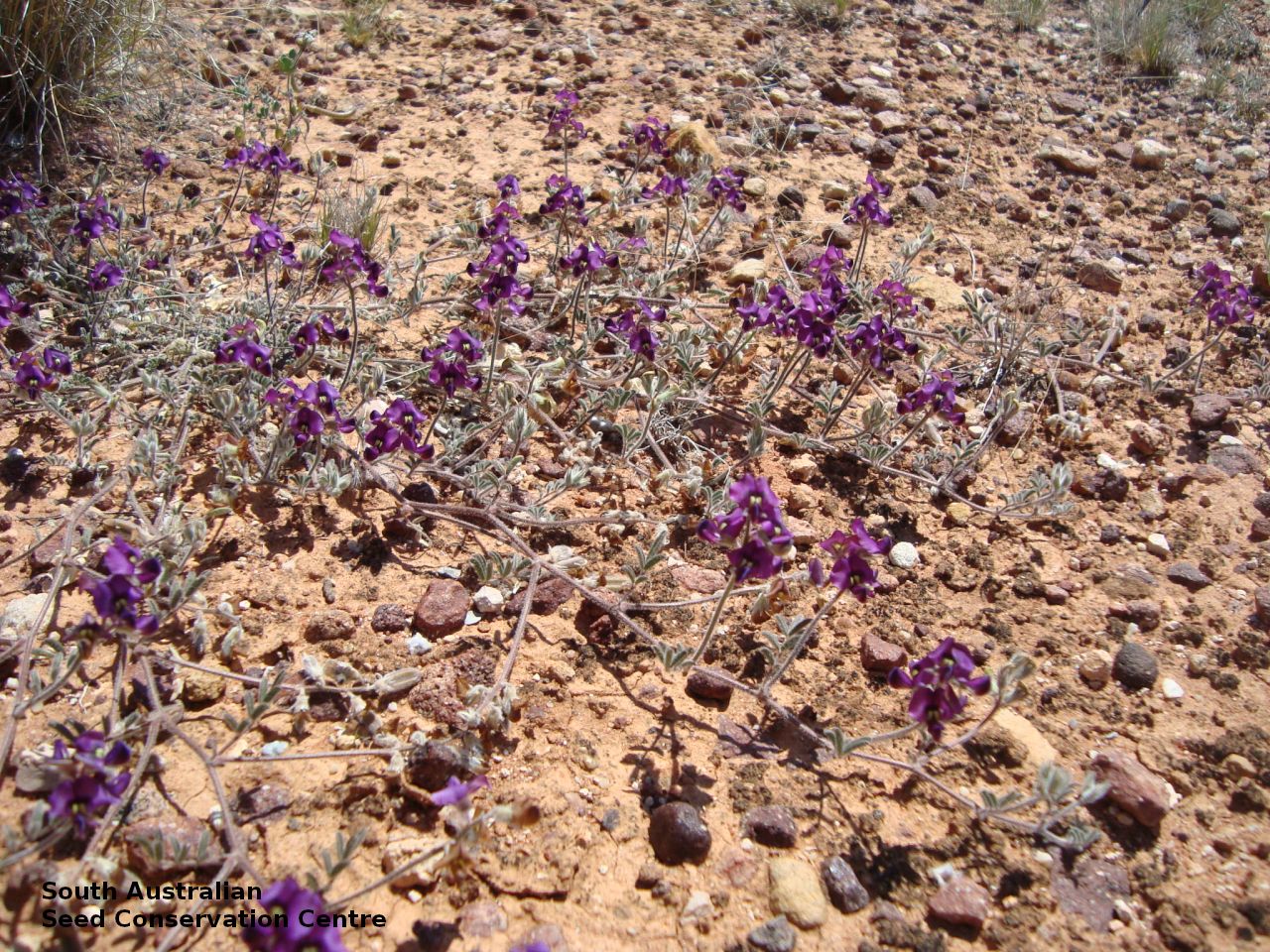
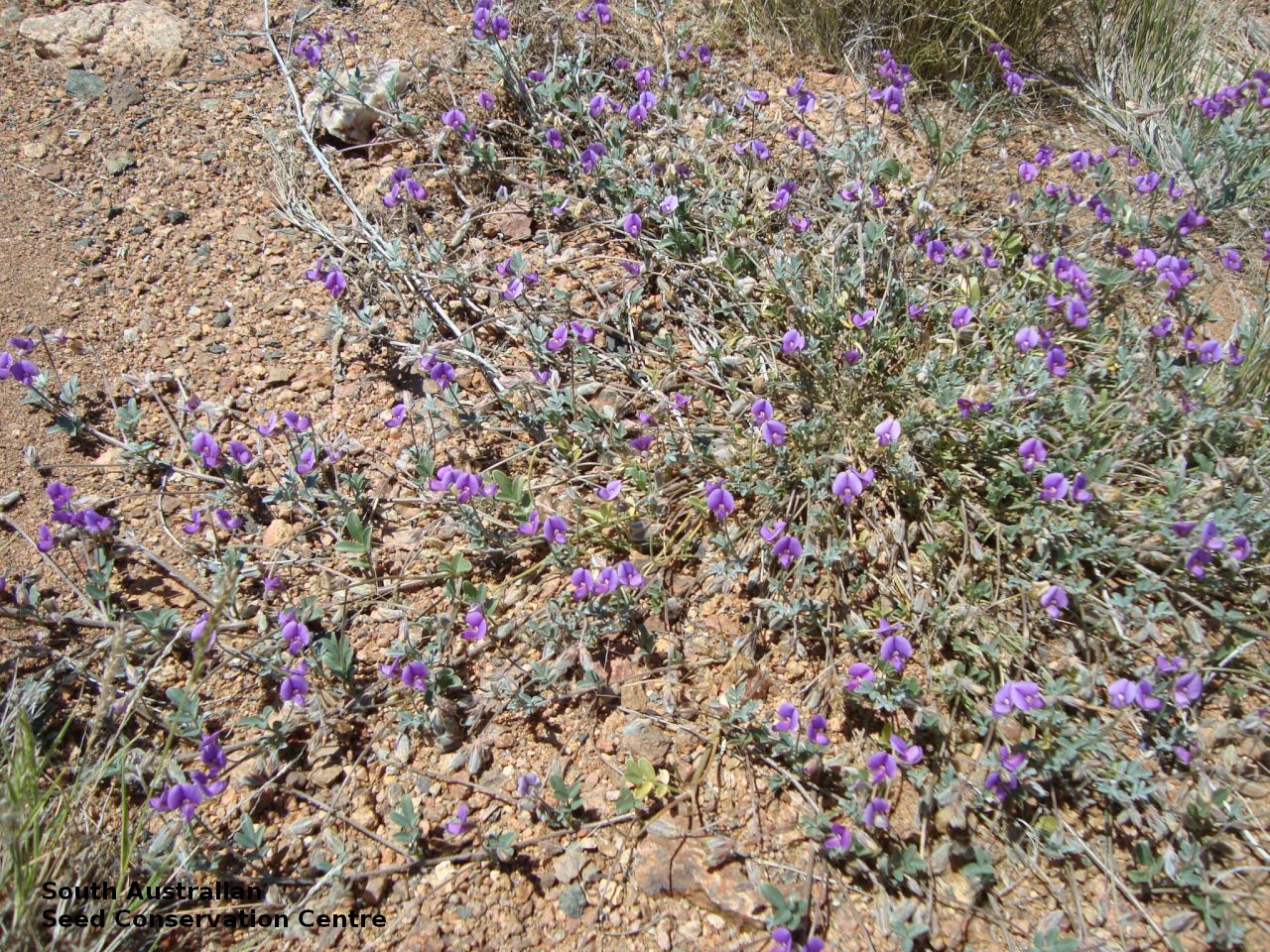
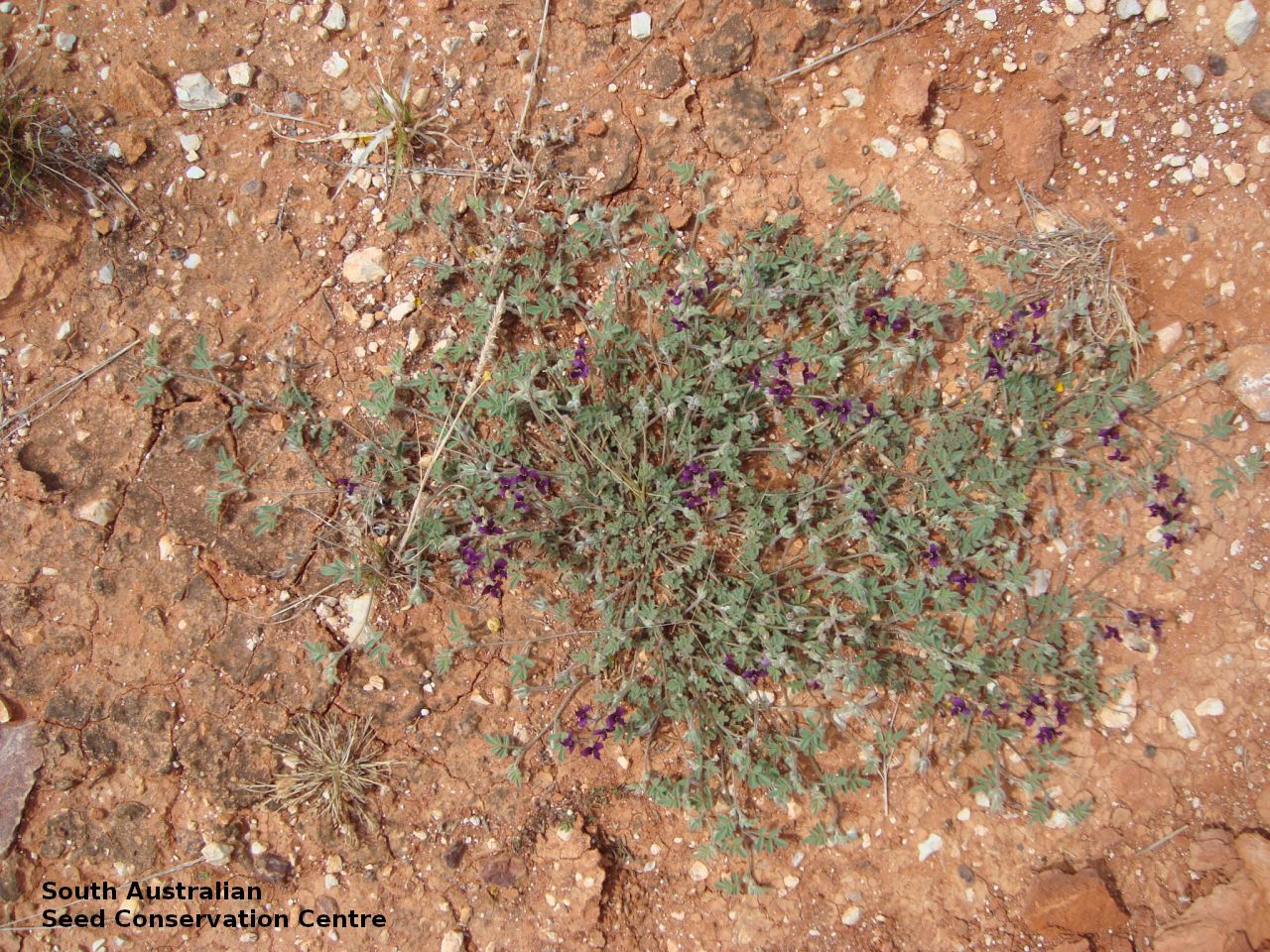
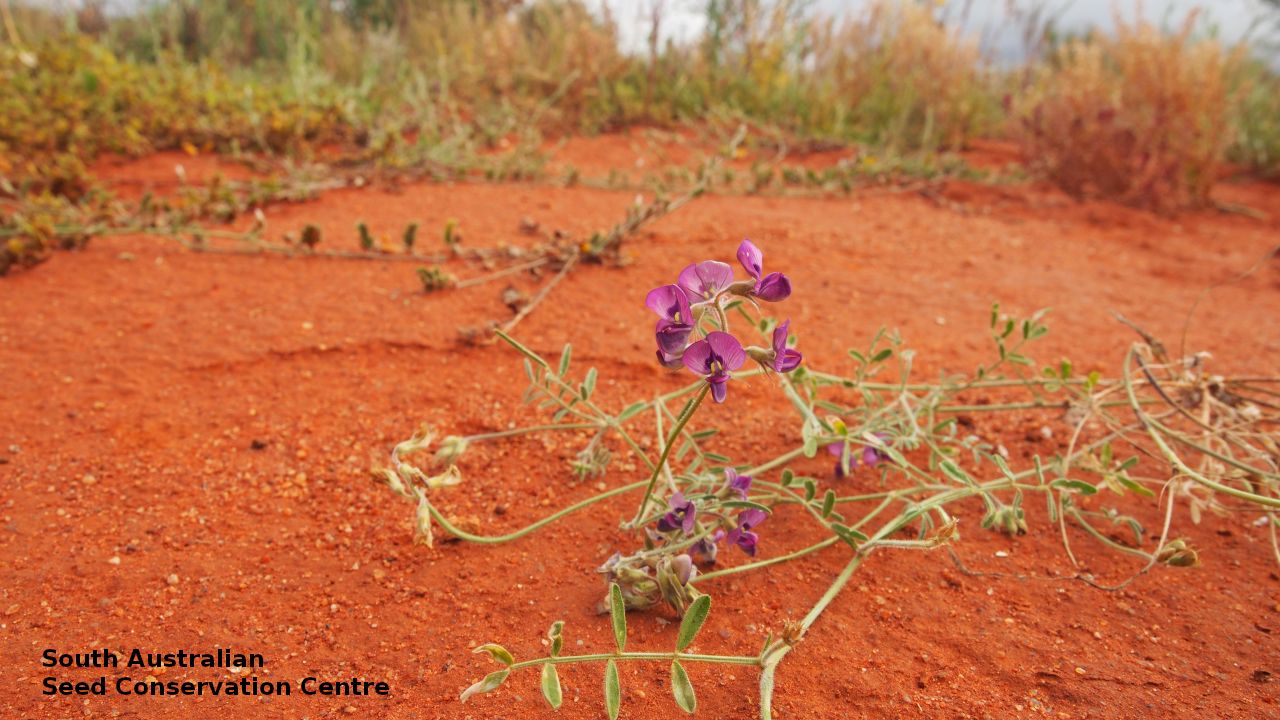
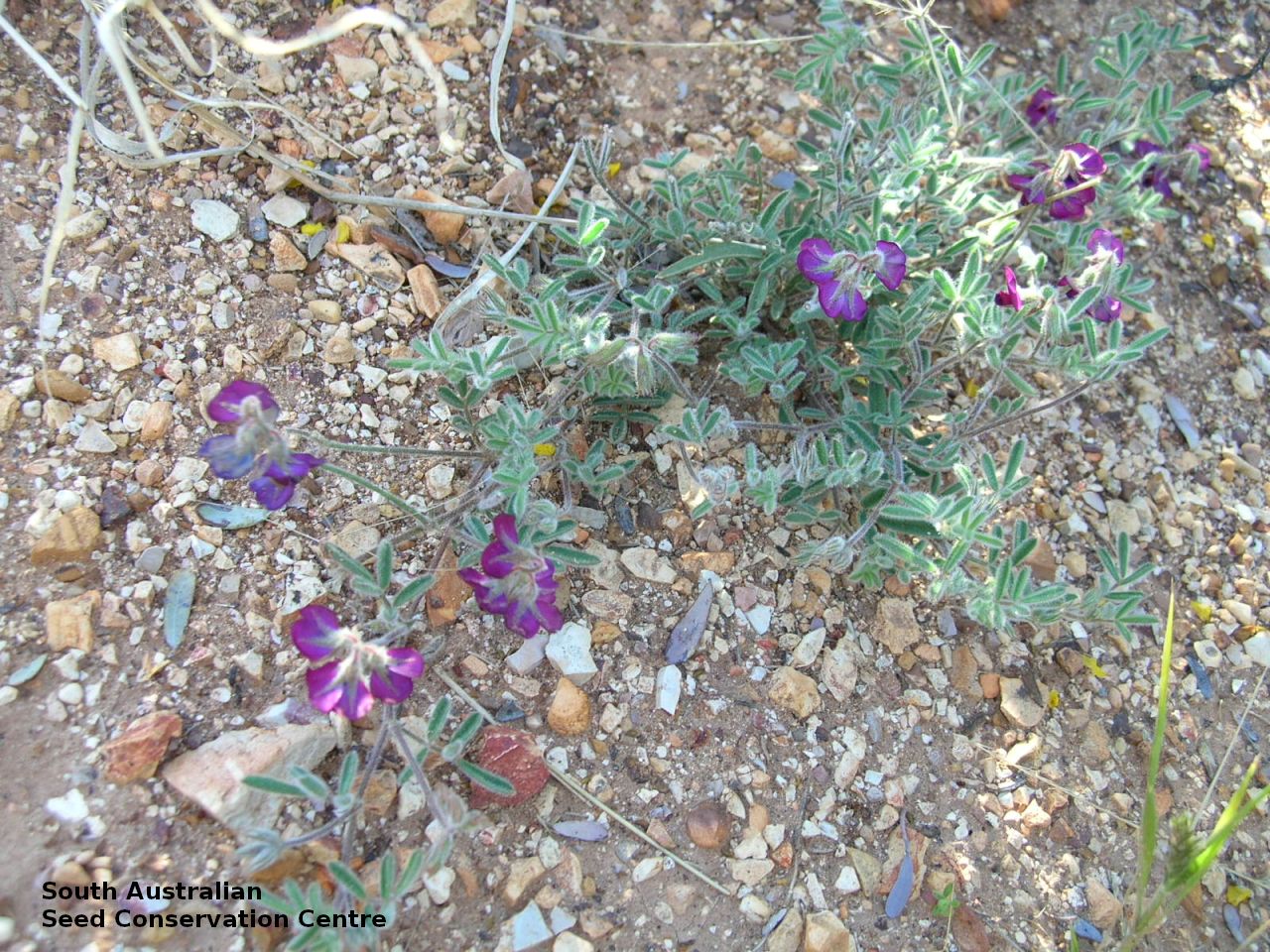
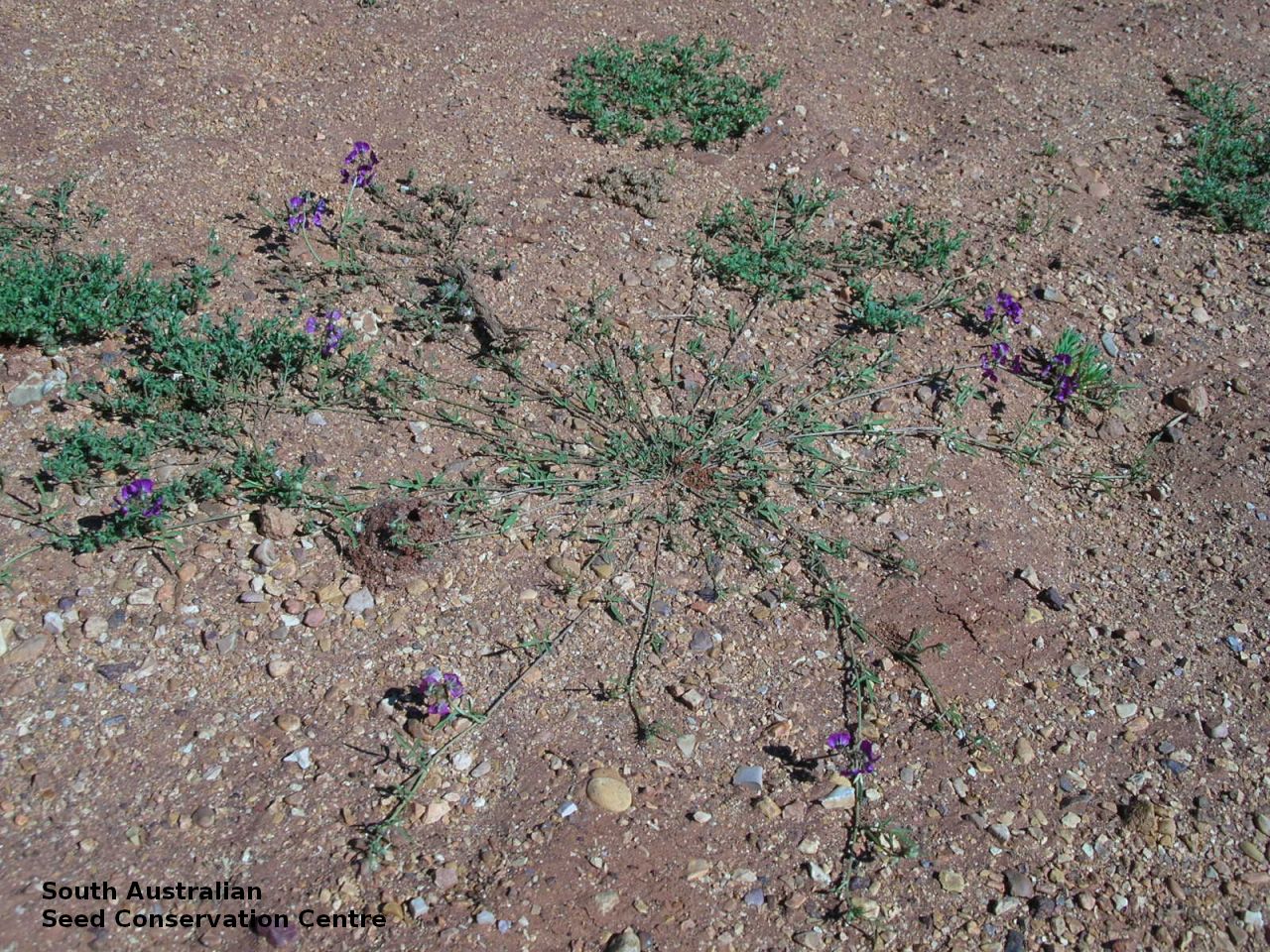
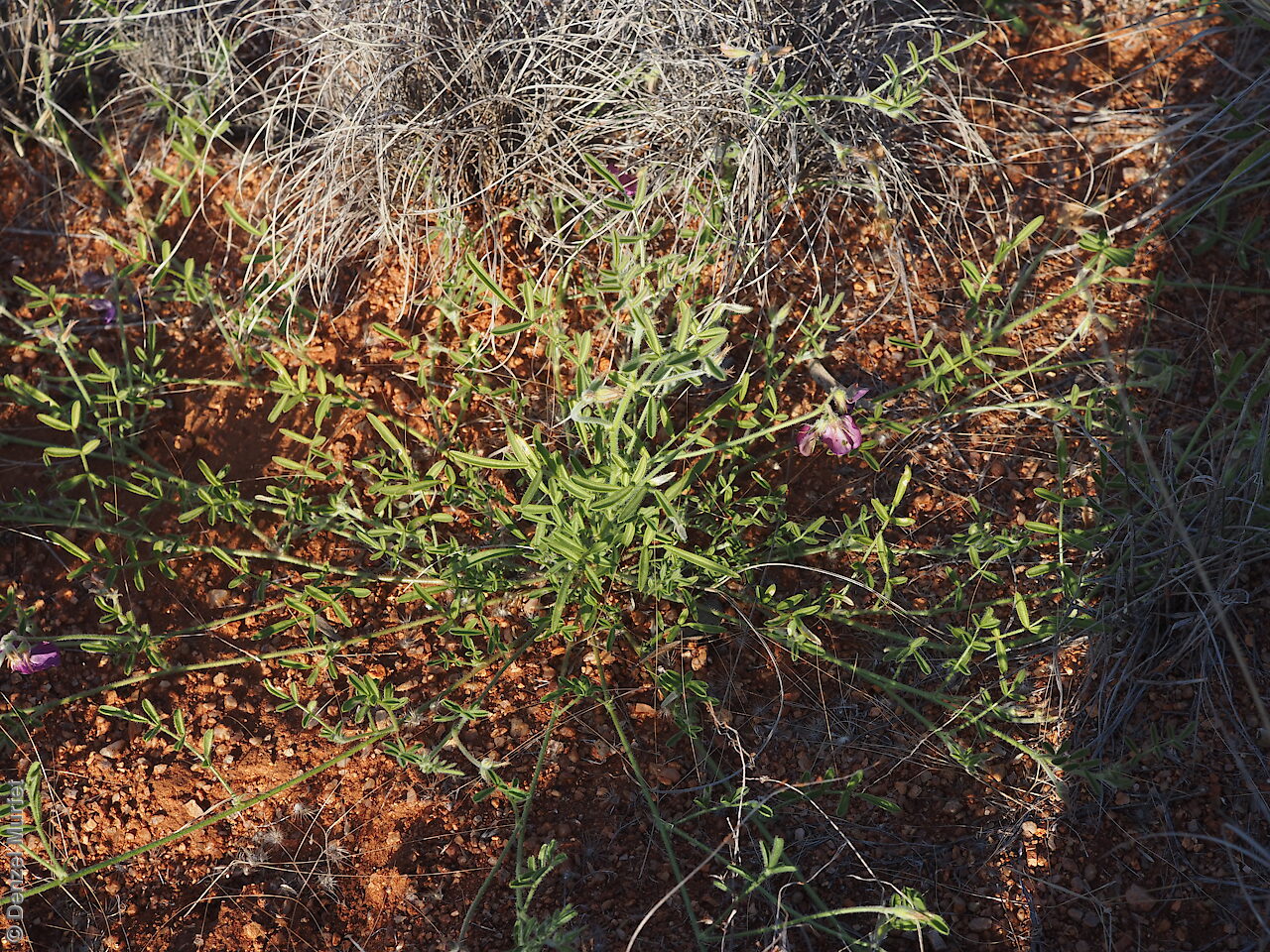
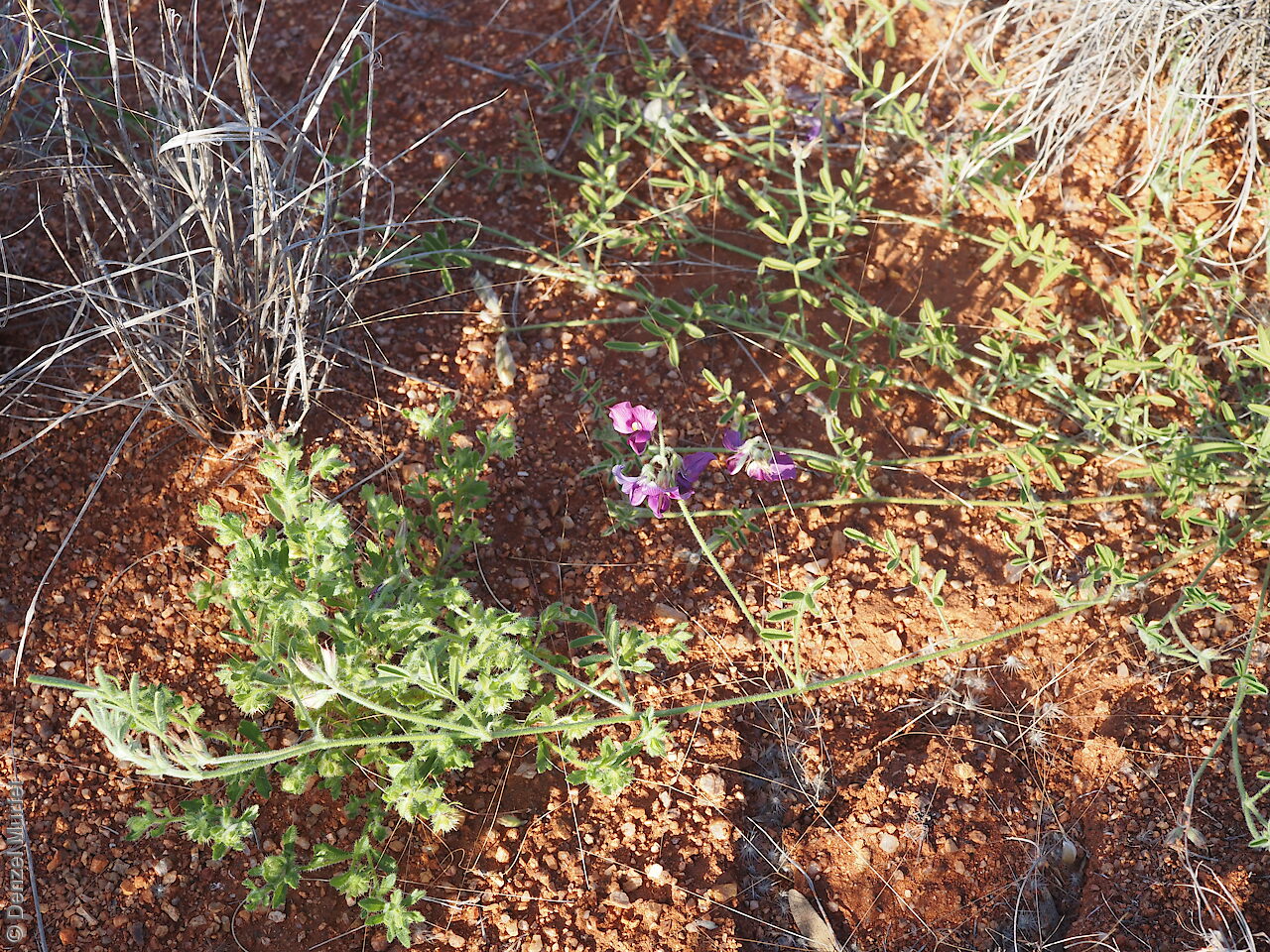
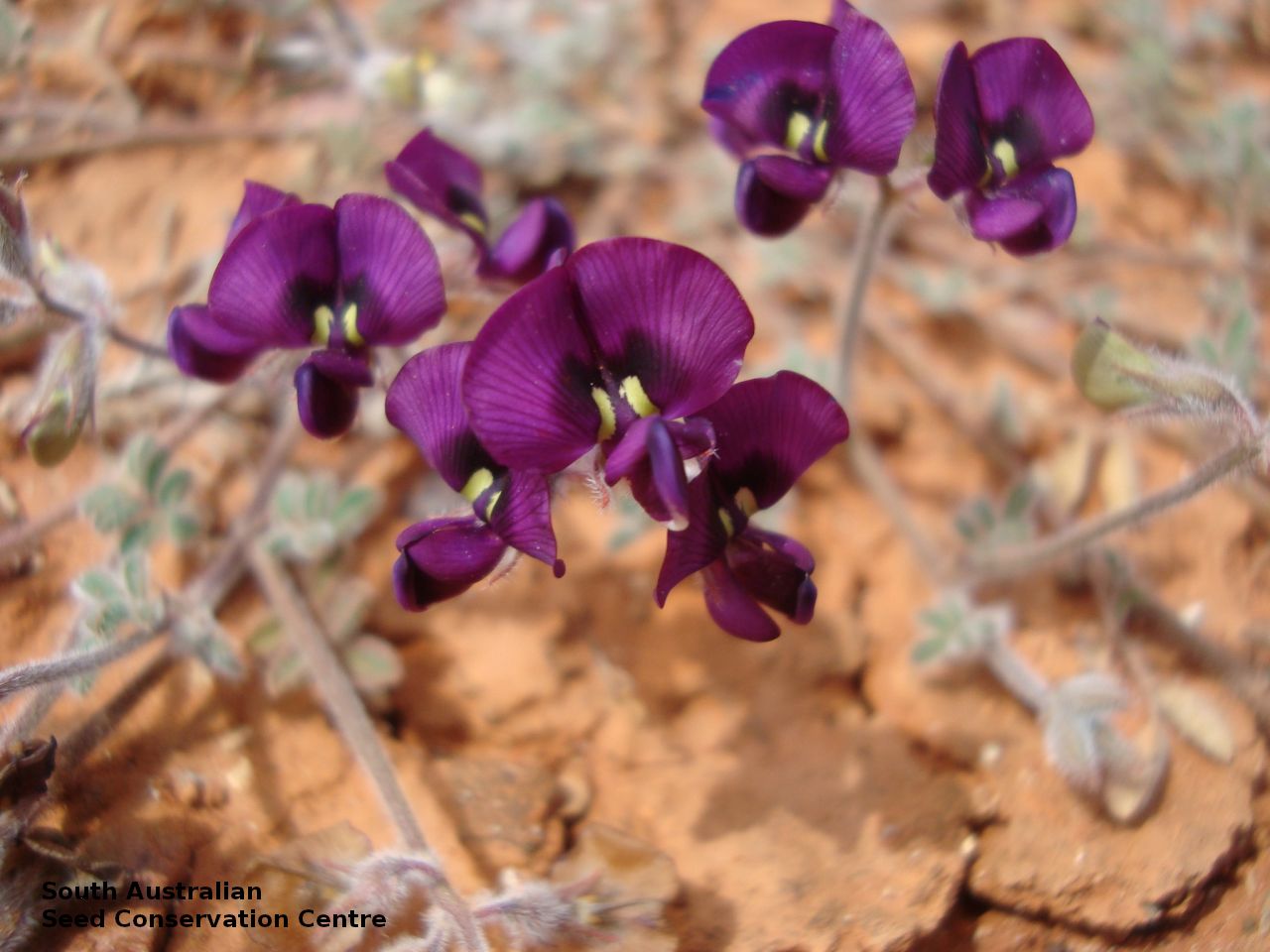
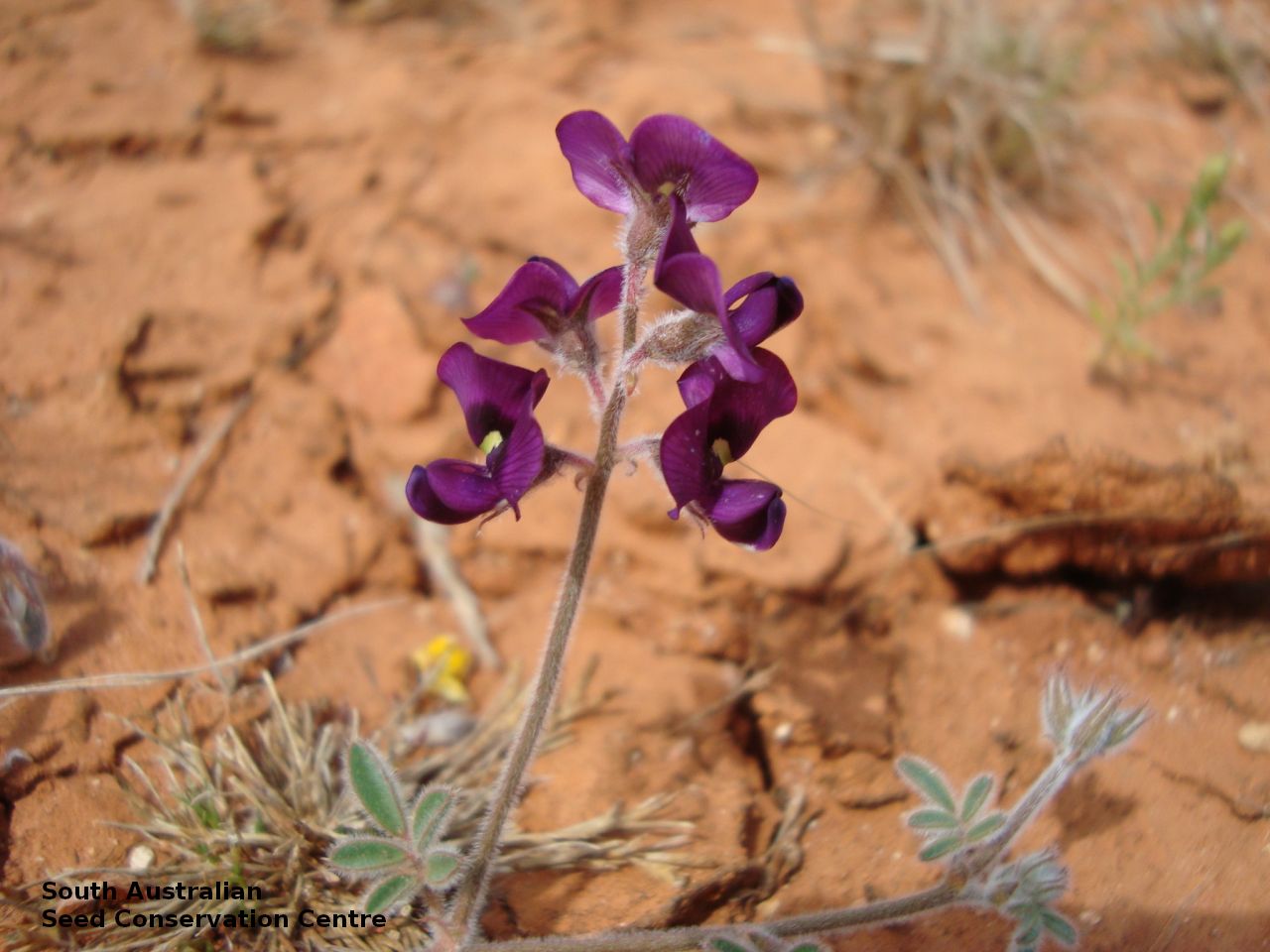
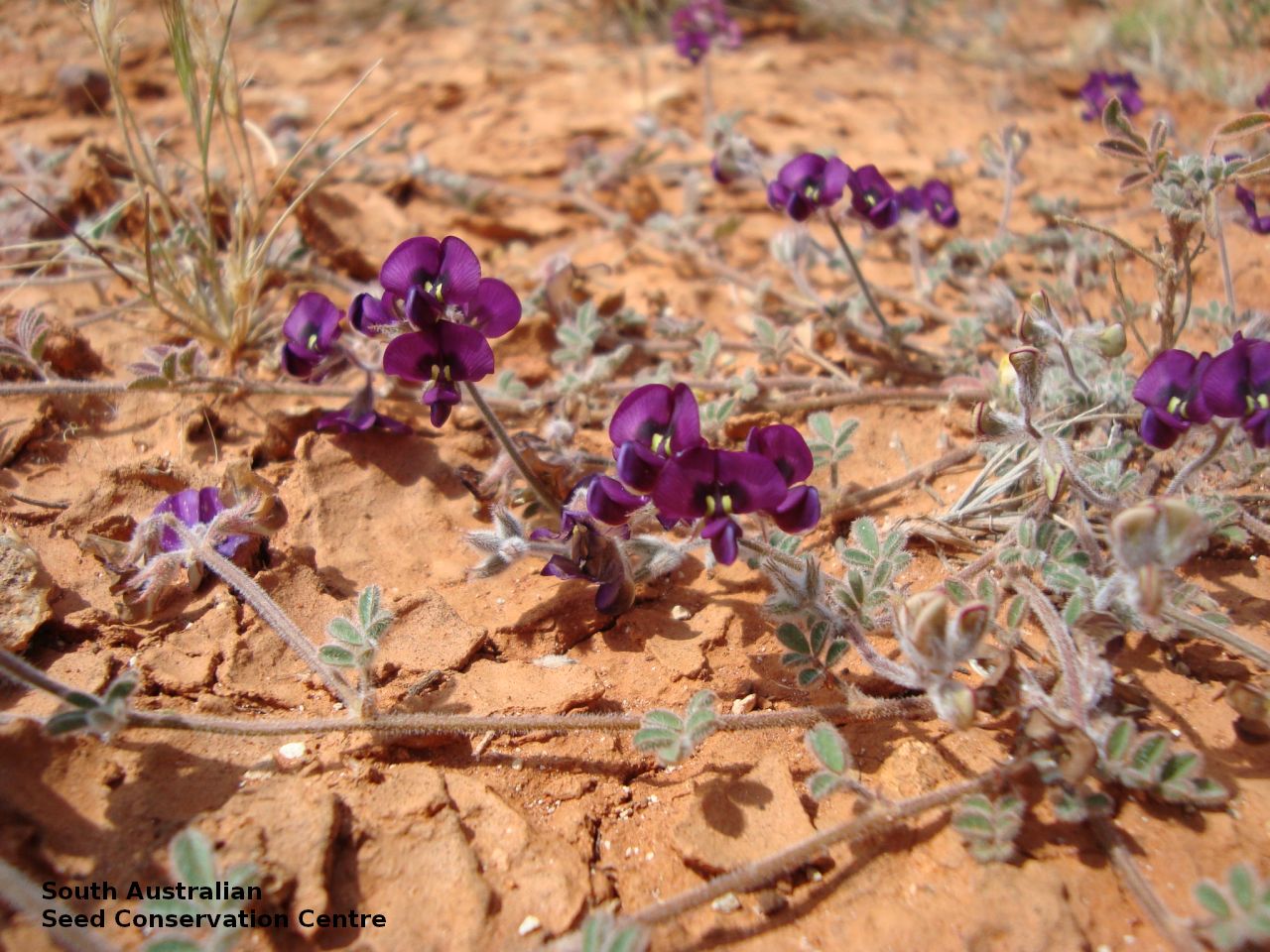
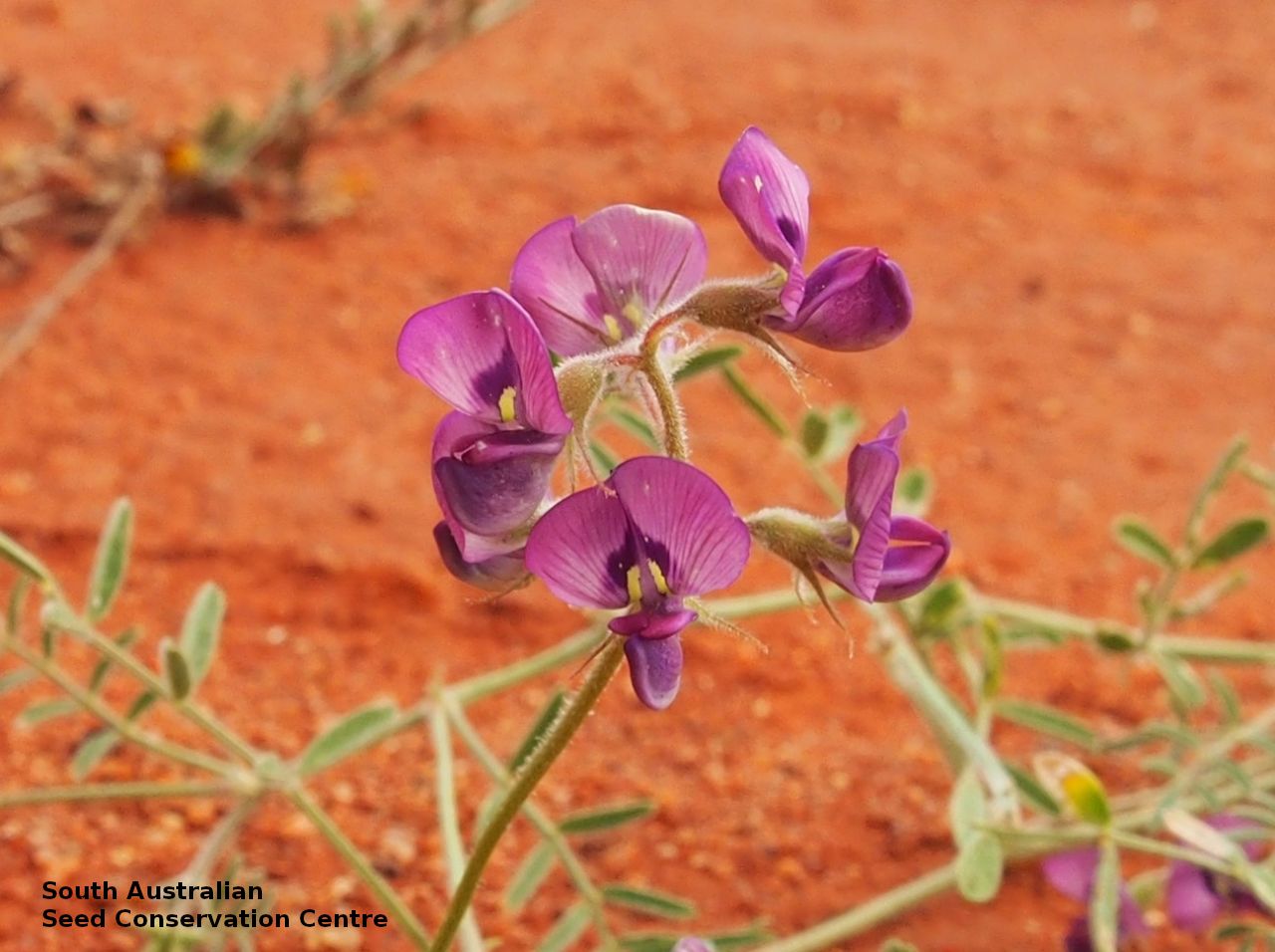
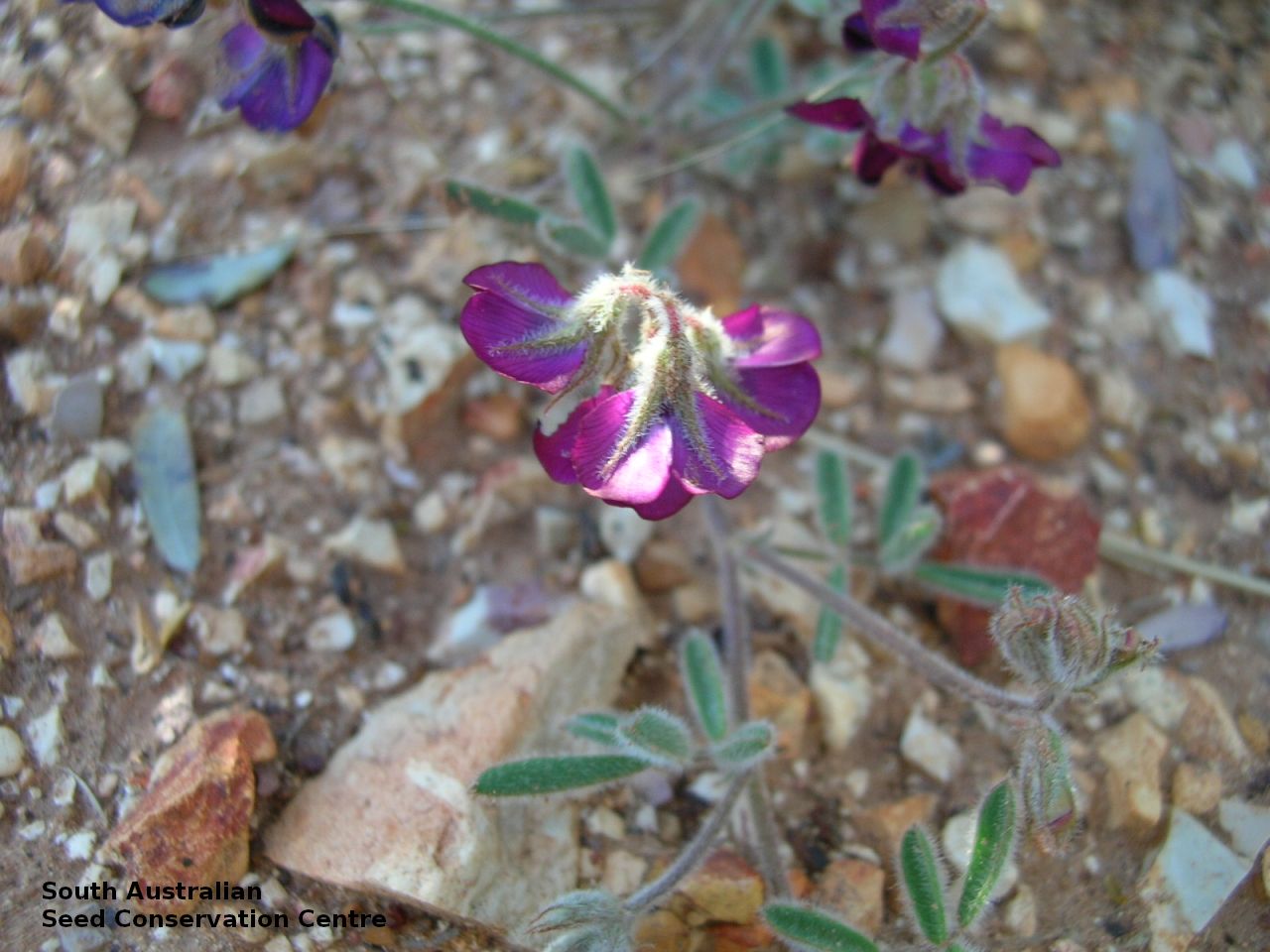
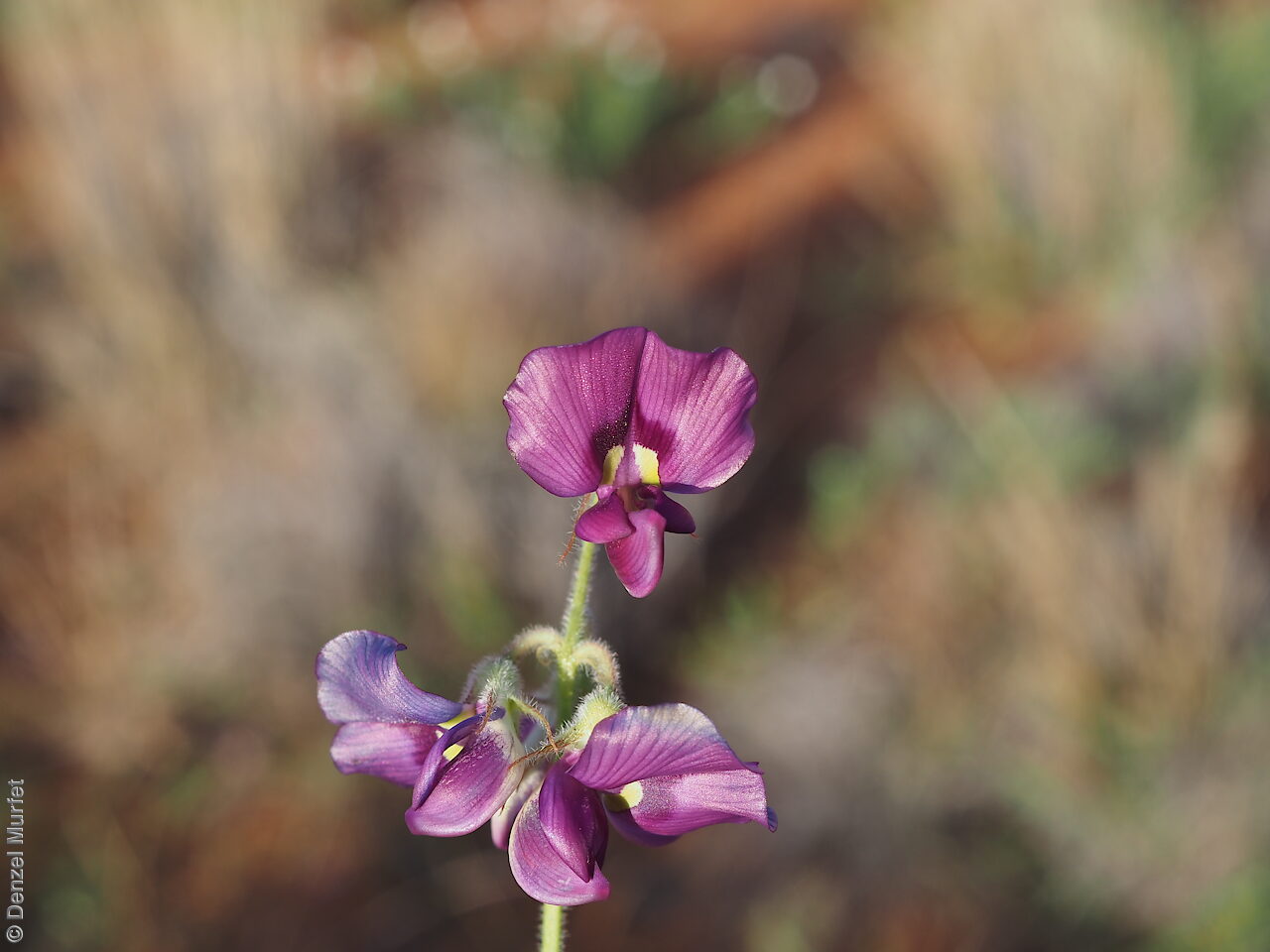

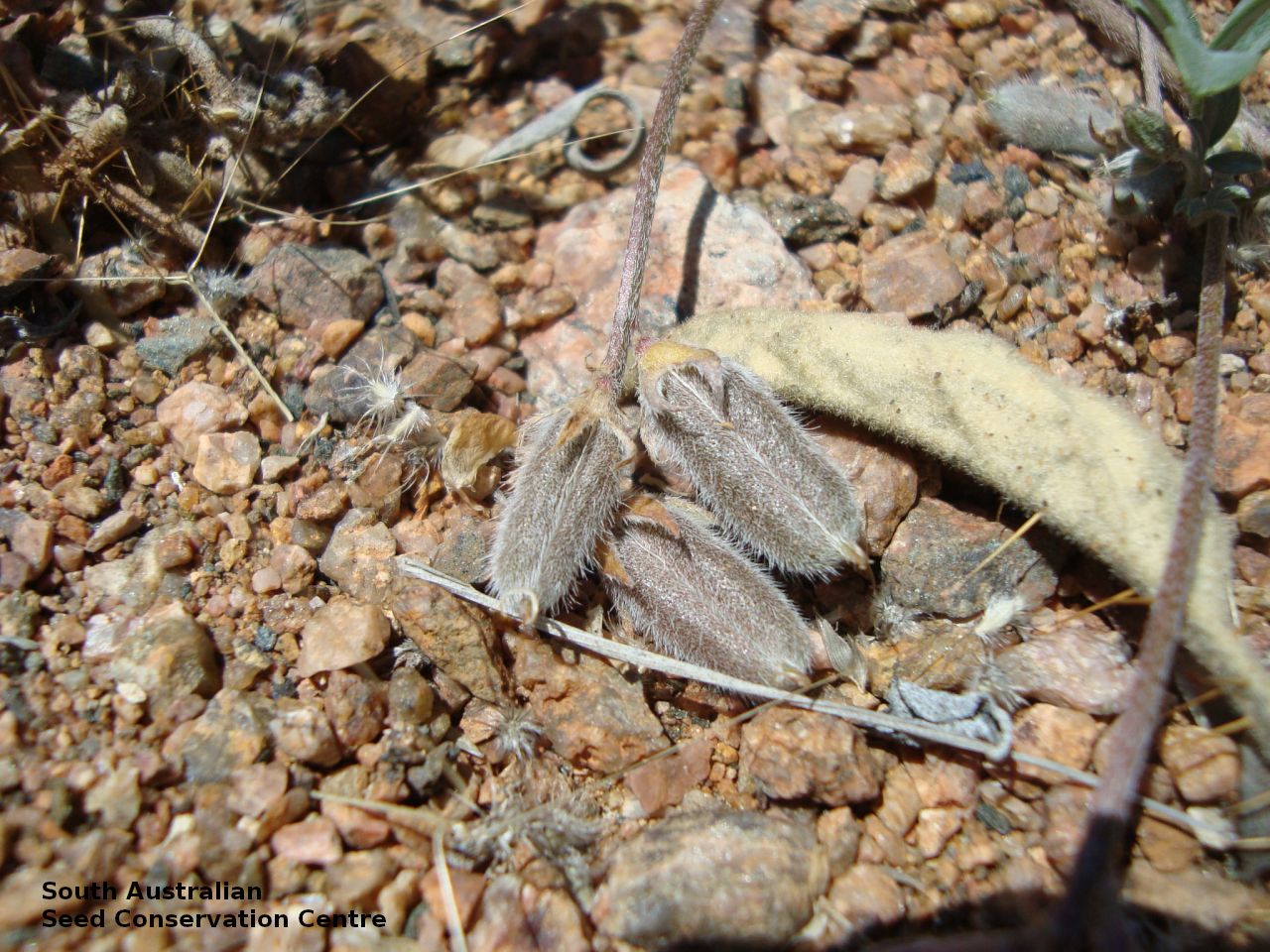
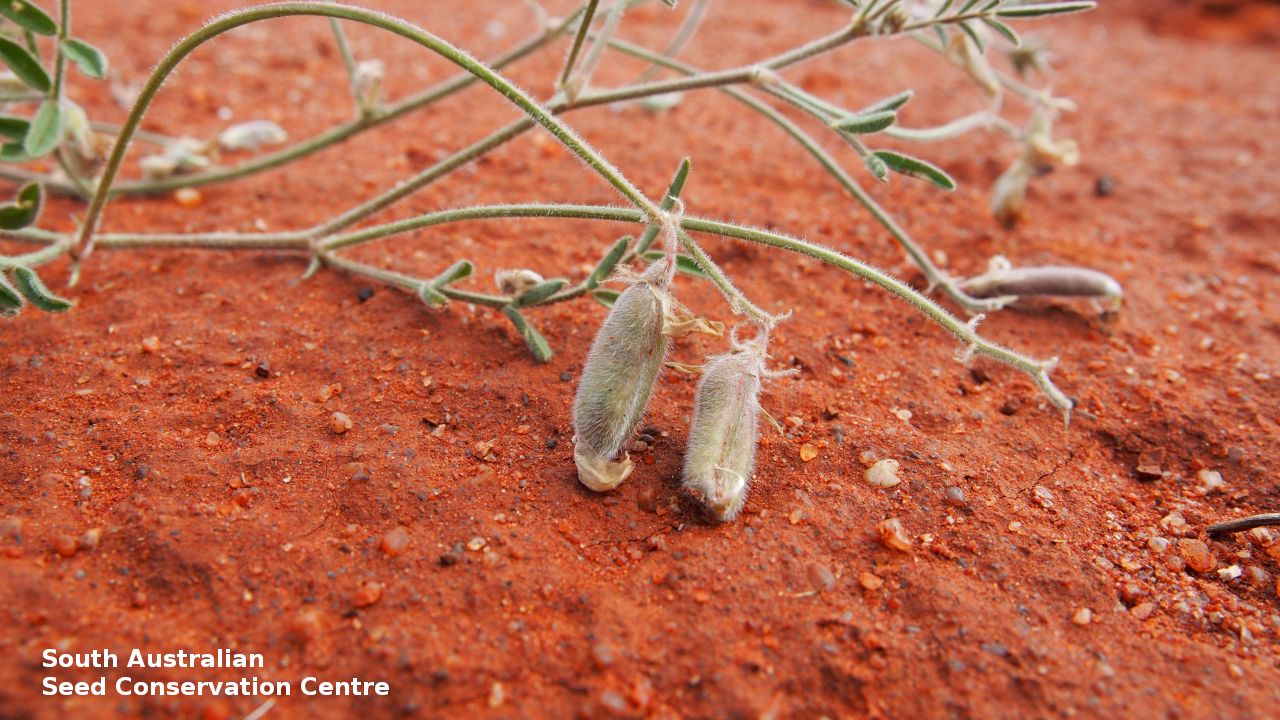
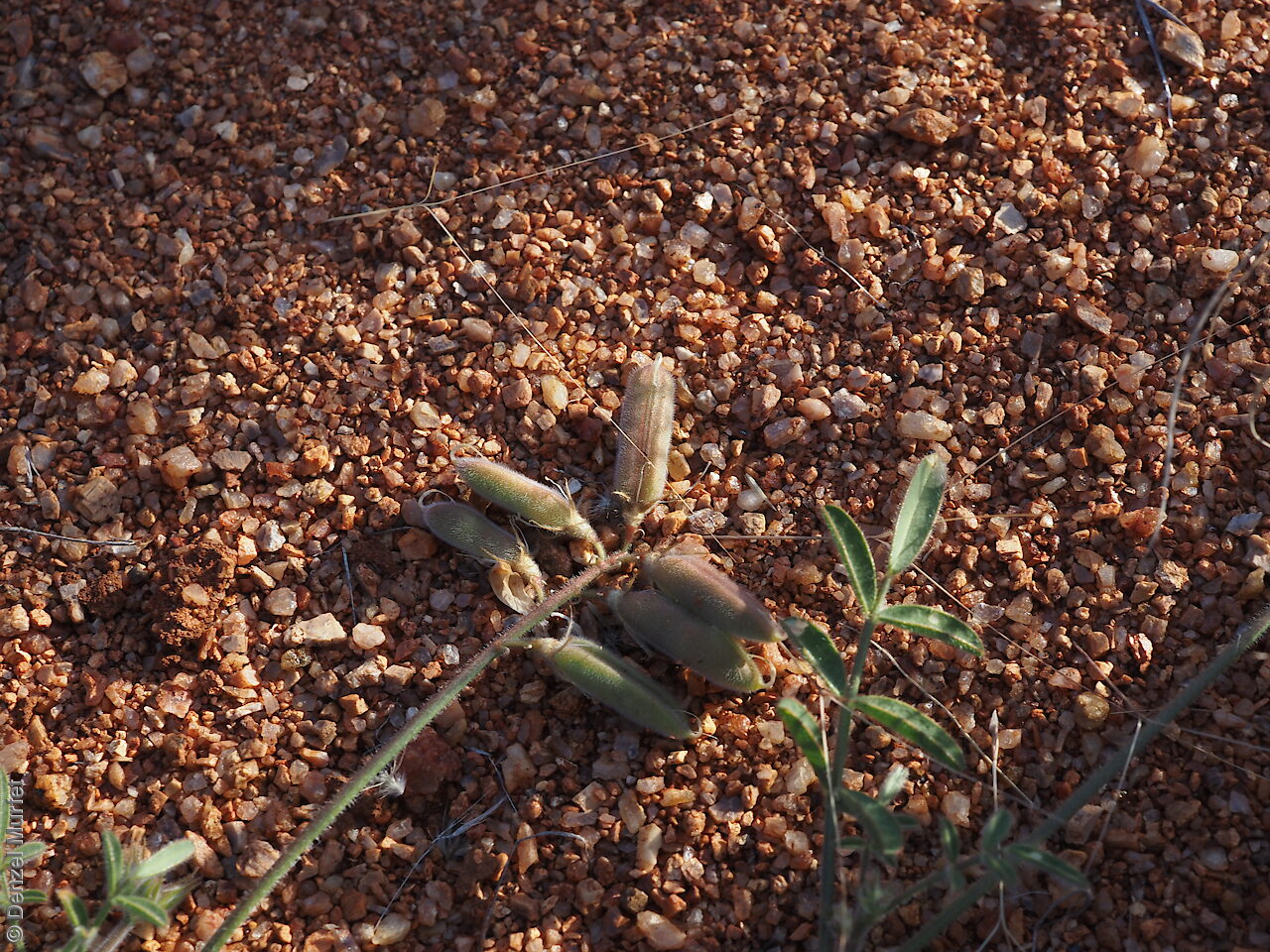
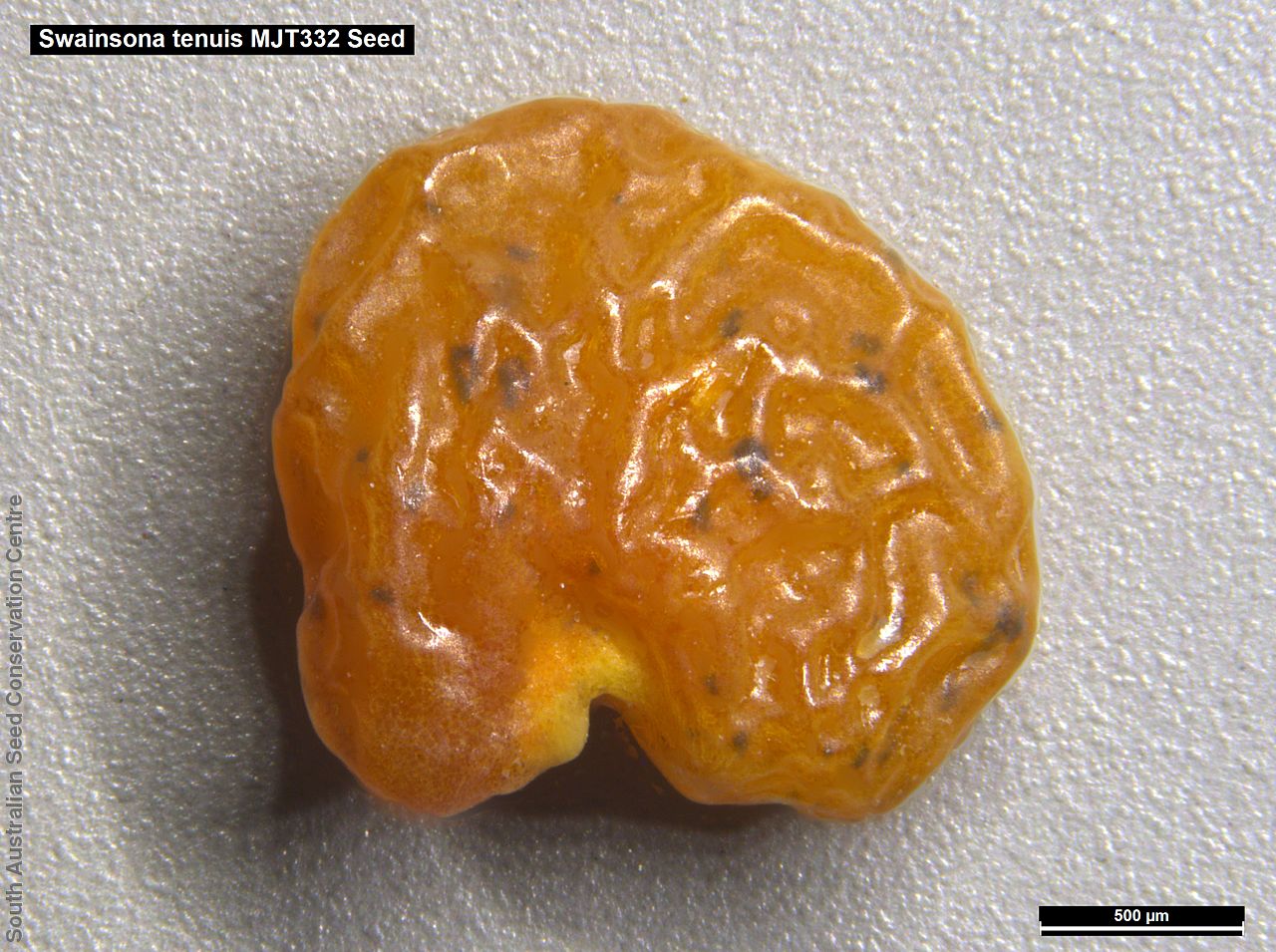
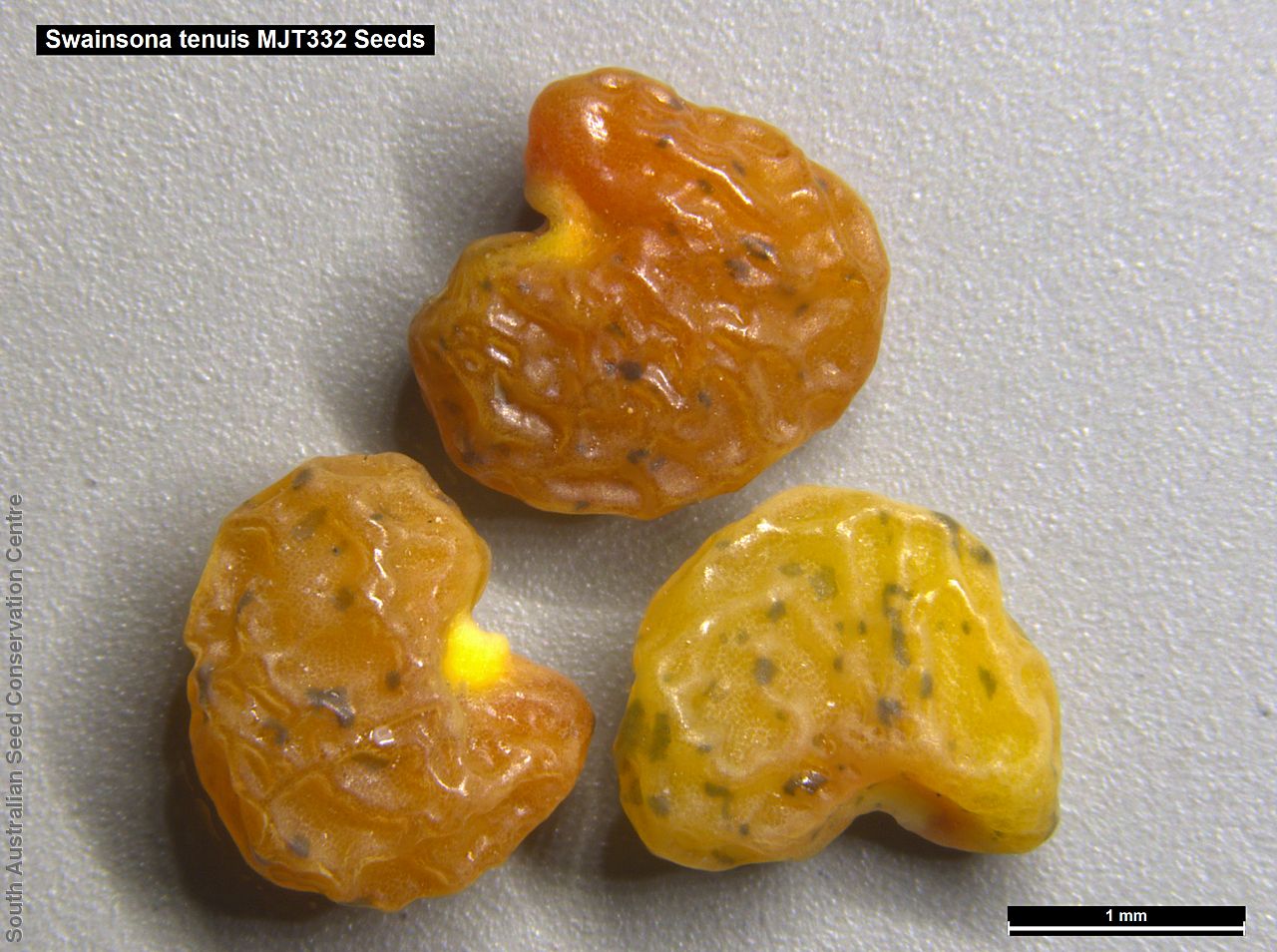
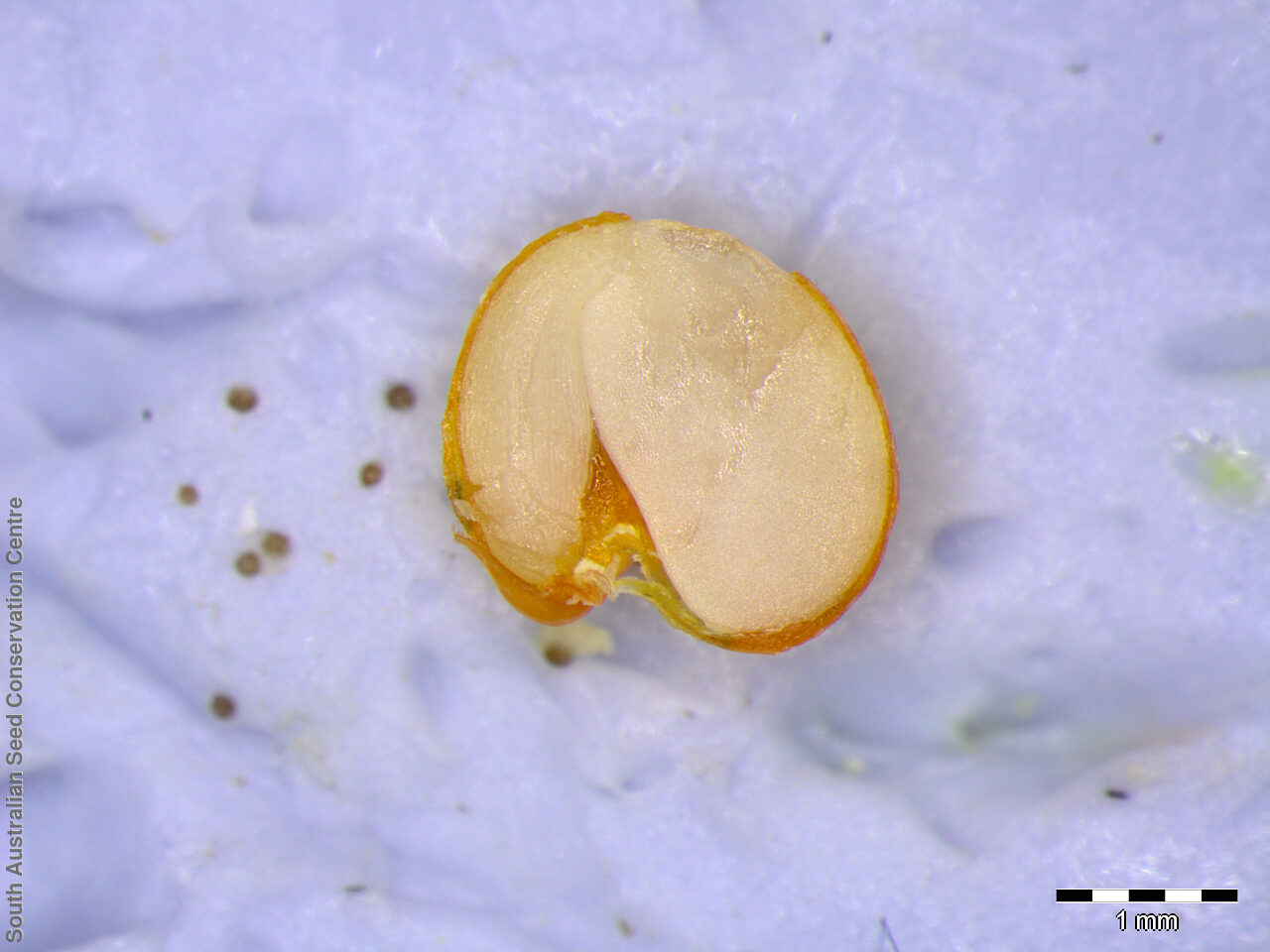
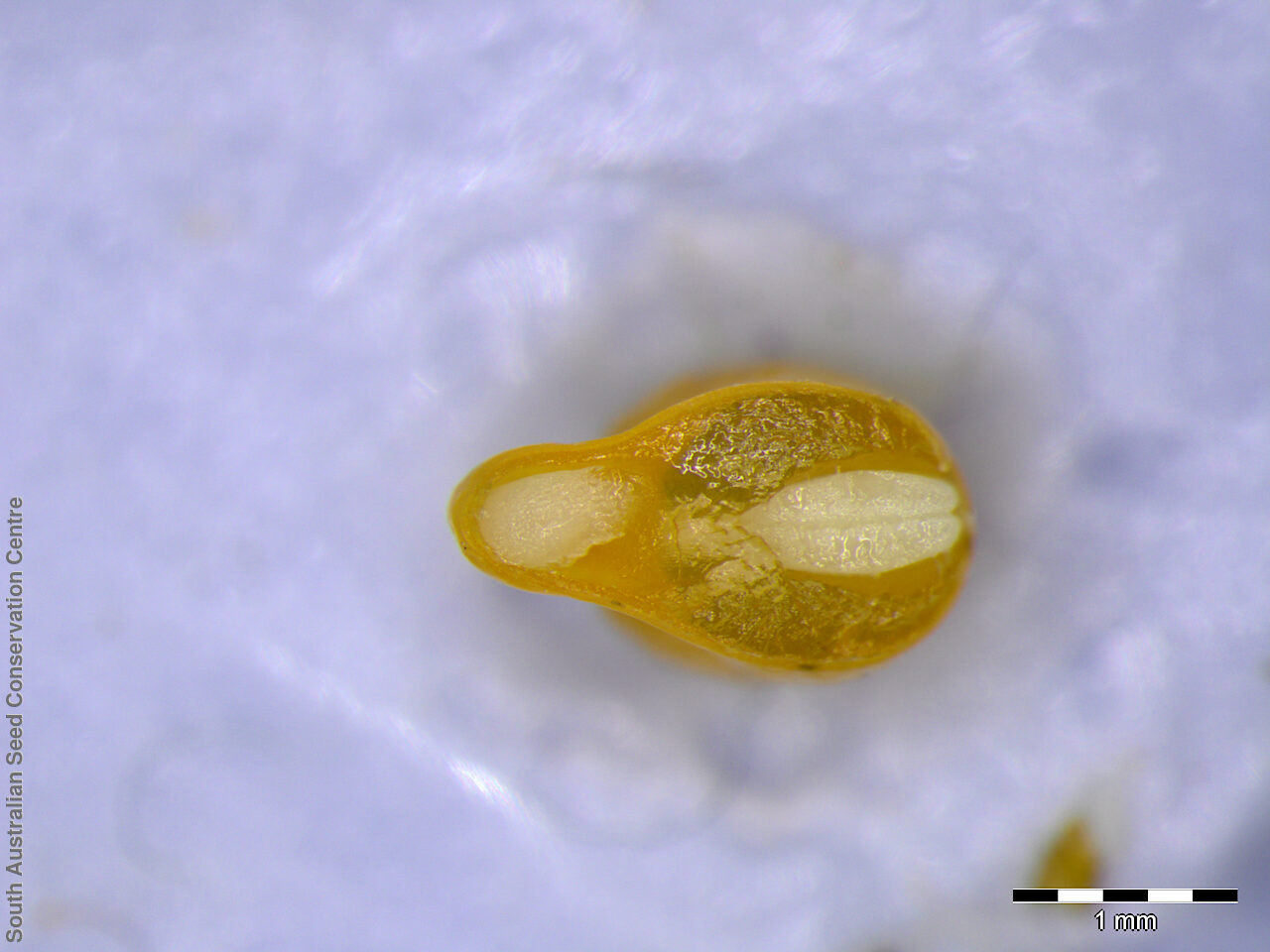

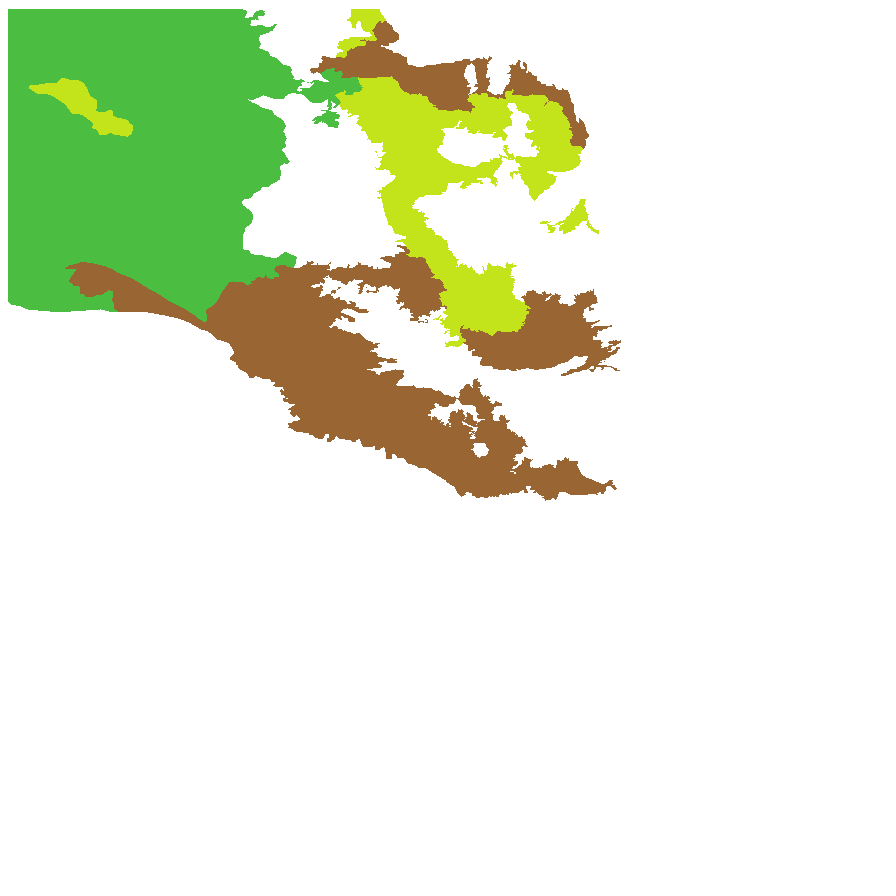
Botanical art
Etymology
Swainsona named after Isaac Swainson (1746-1812), an English scientist and horticulturalist who had a private botanic garden near London. Tenuis from Latin meaning thin, slender, fine; possible referring to the small narrow leaflets.
Distribution and status
Found in red sandy loan or on stony flats and rocky places in the western part of South Australia. Also found in Western Australia and Northern territory. Native. Common in South Australia, Common in the other states.
Herbarium regions: North Western, Lake Eyre, Nullarbor, Gairdner-Torrens
NRM regions: Alinytjara Wilurara, South Australian Arid Lands
AVH map: SA distribution map (external link)
Plant description
A prostrate perennial with numerous dense hairy stems arising from a taproot. Leaves to 7 cm long with 5-9 small, dense hairy leaflets. Flowers purple on the end of a long stalk. Flowering between August and October. Fruits are short, brown elliptic pod to 15 mm long covered in dense hair with a thin leathery texture. Seeds are orange to brown, semi-flat reniform seed to 2 mm long with a wrinkled surface. Seed embryo type is bent.
Seed collection and propagation
Collect seeds between October and December. Collect mature pods. Mature pods can be found lying on the ground next to the plant containing hard seeds. Place the pods in a tray to dry for a week. Use a rubber bung to rub the pods or break the pods open with your fingers to dislodge the seeds. Use a sieve to separate the unwanted material. Store the seeds with a desiccant such as dried silica beads or dry rice, in an air tight container in a cool and dry place. From two collections, the seed viability were high, at 95%. This species has physical dormancy that needs to be overcome for the seed to germinate (e.g. nicking or softening the seed coat).
| Location | No. of seeds (weight grams) | Number of plants | Date collected | Collection number Collection location | Date stored | % Viability | Storage temperature |
|---|---|---|---|---|---|---|---|
| BGA | 3,500 (4.6 g) | 20+ | 13-Dec-2010 | MJT329 Gairdner-Torrens | 1-Jan-2012 | 95% | -18°C |
| BGA MSB | 5,000 (8.33 g) 5,000 (8.33 g) | 50+ | 2-Nov-2010 | MJT332 Lake Eyre | 1-Jan-2012 | 95% | -18°C |
Number of plants: This is the number of plants from which the seeds were collected.
Collection location: The Herbarium of South Australia's region name.
% Viability: Percentage of filled healthy seeds determined by a cut test or x-ray.